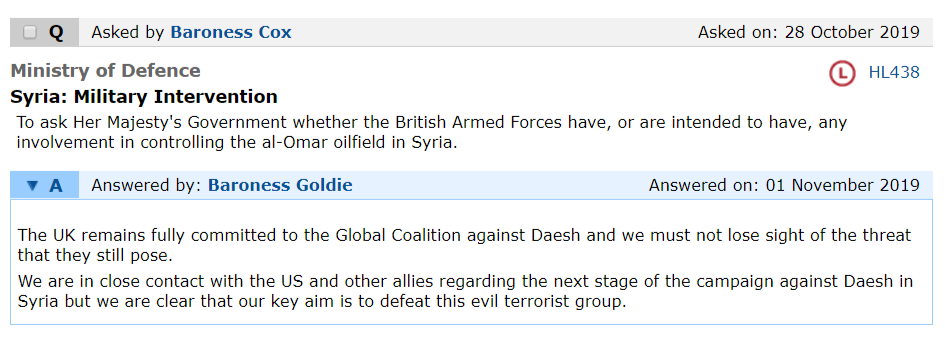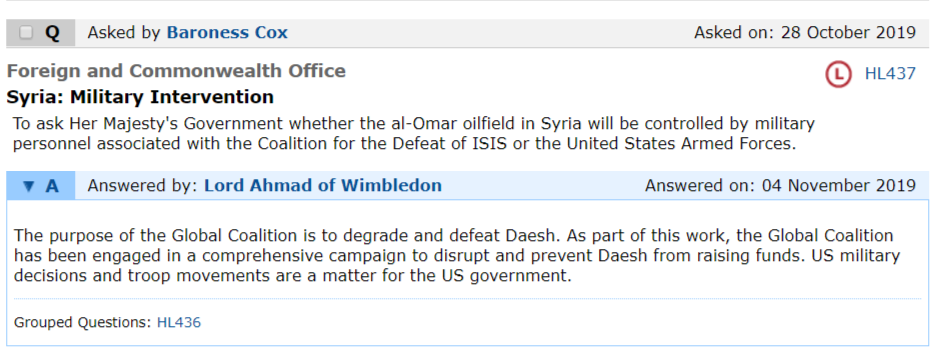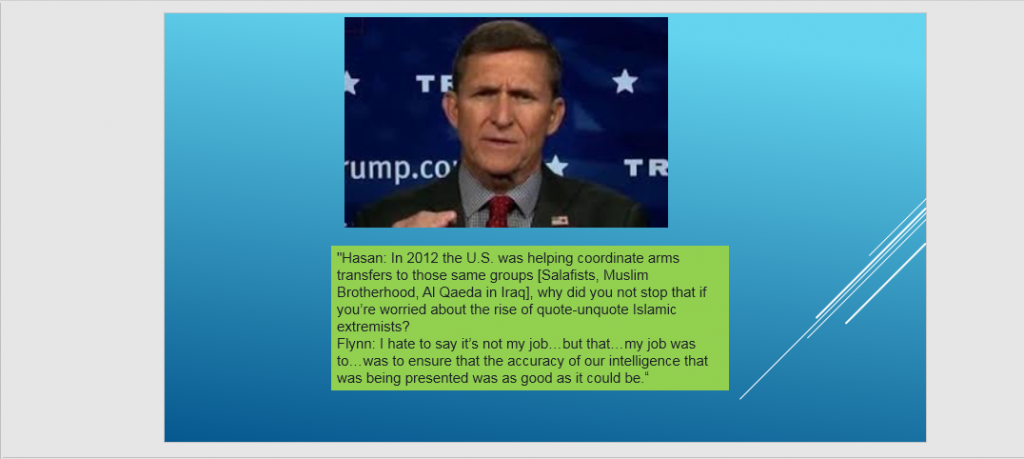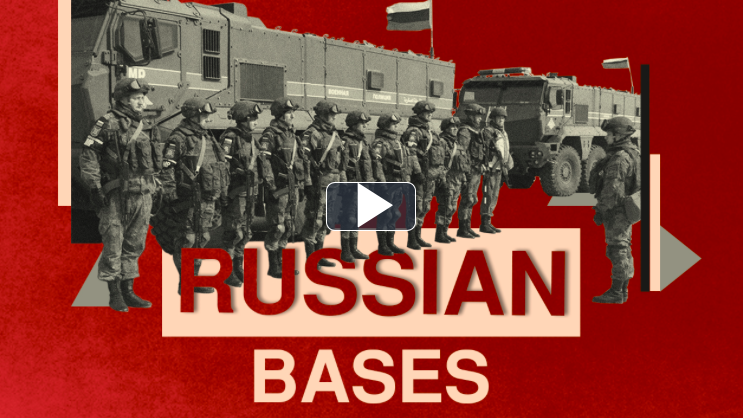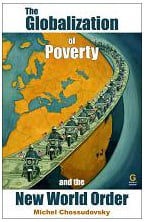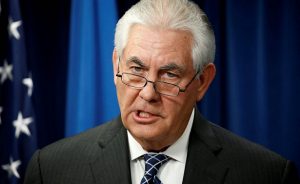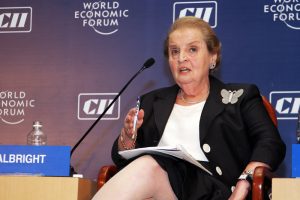China’s vision for the future is “Give Peace a Chance”. It is also the title of one of John Lennon’s most prominent songs. It became the anthem for the anti-war movement, at the time of the US-waged war against Vietnam. John Lennon was a peace activist. No wonder he was ostracized, considered enemy number one by the US establishment, was followed and surveyed by the FBI – and was eventually assassinated. October 9, 1940 is his birthday.
“Give Peace a Chance” is the key motto for China’s peace philosophy throughout her 70-years Revolution, often against challenging situations, especially in the last decade with almost permanent aggressions of one kind or another by the United States and their coopted allies in Europe. China is a tremendous challenge for the west, not only because of her sheer size and economic and technological advances, but also because China seeks peaceful cooperation and development around the globe.
The West does not seek Peace. Peace is bad for business. War is good and profitable, as such renown mainstream journals as the Washington Post have openly propagated in their op-ed columns time and again. Anecdotally, both world wars were initiated in the west. This is the premise under which the permanent western aggressions against the east, especially the leadership of the east, China and Russia, are being waged.
The motto of non-aggression and Peace – a Tao doctrine – prevails in China’s foreign policy as the top principle, as of this date. And there is no indication that China will depart from this Peace dogma which has brought her internal stability, international recognition – and has made China over the last decades to one of the world’s foremost economies, as well as a leader in technological and environmental advances. This, despite constant western castigating for pirating western technology and destroying the environment. The demonization is like a propaganda tool to deviate the world’s attention from western capitalist disasters around the world. But China moves on, undisturbed, generously, with a vision for a common future for mankind all mankind, not just China.
On 1 October, China celebrated the 70th Anniversary of her Revolution. China’s vision began with the Chinese Revolution,when China’s leader of the Communist Party, Mao Zedong, declared the Independent People’s Republic of China on 1 October 1949, succeeding the Republic of China (1912). In fact, China’s Revolution already began just after the Second Sino-Japanese War (1937-1945), at the end of WWII, with the Chinese Civil war (1945 – 1949), also called the War of Liberation.
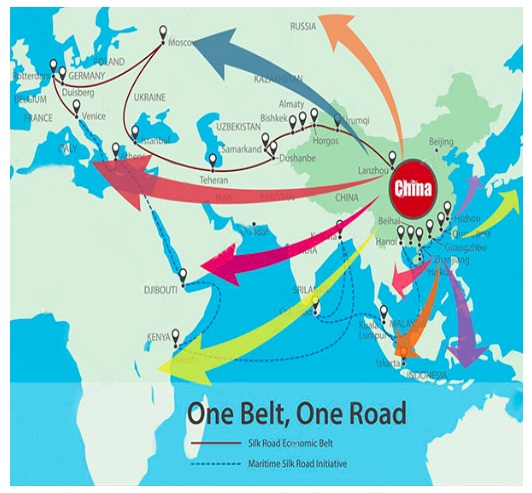
The International Forum on “China’s 70-Year Development and the Construction of the Community with a Shared Future for Mankind”– 5-6 November in Shanghai, is part of the celebration. It is a forward-looking event with a Chinese vision for the future. To better grasp that vision for the future, here is a quick look at the past.
History with Foresight
Visionary Chairman Mao Zedong wanted to finally free the people of China from hundreds of years of western colonization and oppression, from the calamities of Opium Wars I and II (British imposed 1839-1842, and 1856-1860) and engaged the Chinese Communist Party (CPC – Communist Party of China) in an all-out confrontation with the Kuomintang (KMT), or the second phase of the Civil War (1945 – 1949). The KMT, also called the Nationalist Party, was led by General Chiang Kai-shek, who succeeded KMT’s founder, Sun Yat-sen, after his death in 1925.
Chiang Kai-shek had the support of the United States, whose main objectives were stopping the “spread” of communism and maintaining continuous access to China’s riches, mostly in the form of natural resources, but also by exploiting the Chinese labor force. Washington ordered Chiang to break all relations with the Soviet Union – and to eliminate the threat of a communist leadership in China. This led to a lingering on and off conflict from the 1920s onwards between KMT and the CPC (also considered the first phase of the Civil War).
Hostilities began shortly after the foundation of the KMT in 1919 which was ‘helped’ by the United States. While Mao and his Communist Party emerged as the winner of the Civil War in 1949, Chiang Kai-shek and his followers took over the Chinese Province of Taiwan, where Kuomintang is still the ruling party. China’s non-aggression against the occupation of Taiwan is one of the many demonstrations of China’s peaceful diplomatic approach to conflict.
The current President of the Republic of China, as Taiwan calls itself, although it is a part of China, is Tsai Ing-wen, a politician and professor, in office since 2016. He caters entirely to the interests of Washington and the west in general, even vying to buy independently – and totally illegally – weapons from the US. While part of the PRC, Taiwan enjoys a certain autonomy, again compliments of China’s non-belligerent approach to conflicts.
Today, Taiwan is still recognized by 14 countries out of 193 UN members as the official representative of China. This, despite the fact that the UN declared the People’s Republic of China already in 1971 as the official representative of China with one of the five permanent seats in the UN Security Council (UNSC). Countries recognizing Taiwan as official China, still bending over to please Washington, are becoming fewer and fewer, as China is emerging as the number one economy of the world; call it socioeconomy, because China’s advancements are not just measured by the western standards of linear economic growth, but promote distributive growth, encompassing also vast improvements of people’s quality of life.
Mao’s victory brought a new era to the Chinese people. With what he called the Great Leap Forward (1958 – 1962), Mao and the CPC led a social and economic campaign converting the rural agrarian areas into a socialist industrialized economy through communal farming or agricultural cooperatives. This 4-year effort was constantly attacked and disrupted by infiltrated anticommunist saboteurs at a high social and monetary cost for China. But it served as a learning phase. China’s flamboyant rise to the second (by some accounts the first) world economy, proved that the lessons helped defeat US interference then and today.
The ten-year Cultural Revolution (1966 – 1976) was Mao’s sociopolitical movement aiming at cleaning socialist China from infiltrated capitalist elements and influences. Then, and to some extent still today, China was full with so-called Fifth Columnists, a term coined during the Spanish Civil war, when General Franco’s Nazi-party, the “Falange”, were able to defeat the legitimately elected Republicans, because the “Falange” had what they called a “Fifth Column” clandestinely embedded among the Republican defense forces in Madrid. Today Fifth Columnists are everywhere. They come in all shapes and forms, including disguised as western NGOs, in every country that Washington and its western allies want to dominate and provoke ‘regime change’. It was clear that the west, predominantly the emerging US empire, wanted to disrupt Mao’s revolution; they would not let China flourish under her own political, communist values and believes.
Foreign meddling in China’s Revolution came at a huge cost for China. As a consequence, Mao’s revolutions are often portrayed by the west as failures, the usual western tarnishing the success of other nations, of other socioeconomic systems, in order to hide the west’s own disastrous failures. From a Chinese and humanitarian perspective, Mao’s Revolutions have drastically improved the public education and health system, have eradicated endemic deadly diseases inherited from the western dominated colonial and KMT times – and, foremost, poverty was largely eradicated. As of these days, about 750 million people have been lifted out poverty. Alleviation of poverty was an emphasis under both of Mao’s Revolutions. These Revolutions also taught valuable lessons to Chinese scholars and future leaders – and have drastically advanced China towards food self-sufficiency which she reached by 2018.
It is thanks to these lessons that, after Mao’s death in 1976, his successor, Deng Xiaoping, led China through a far-reaching economic reform, including elements of a market economy, however always under central government control – a principle that is maintained as of today. Deng called the new Chinese economic model “socialism with Chinese characteristics”, a principal that continues today. He helped develop China into the world’s fastest-growing economy, improving the lives of hundreds of millions of citizens. Deng also masterminded the return of Hong Kong from a UK colony to China in 1997, and Macau from Portugal in 1999. The transition was completed by Deng’s successor, Jian Zemin.
Deng retired in 1992. His successor, Jian Zemin, had several high-ranking positions in previous governments and was President of the PRC from 1993 – 2003. Jian opened China further for foreign investments and trade. He visited the US in 1997, where he met with President Clinton. Jian followed a non-confrontational foreign policy, like his predecessors, strengthened relations with western partners, especially the United States – and maintained at home an economic annual growth of at least 8%. This led to an explosion of wealth, but also initially to a less than optimal distribution of wealth, most of which concentrated along China’s eastern shores, risking conflicts with the lesser developed Chinese “hinterland”.
Hu Jintao followed Juan Zemin as China’s Paramount Leader from 2002 to 2012. Hu, as a rather modest leader, along with his Premier, Wen Jiabao, and his Vice-President, Xi Jinping, continued the policy of economic growth and development, achieving more than a decade of double-digit growth, however shifting the economy gradually more to non-consumption growth, fostering, instead, socioeconomic equality, aiming at building a “Harmonious Socialist Society”.
Hu was seeking a prosperous China, free of internal social conflicts and pursued internally and externally a “peaceful development policy” – with ‘soft power’ meaning a diplomatic approach to foreign policy issues, that was never confrontational. During Hu’s rule China increased its influence in Africa and Latin America, laying the groundwork for future closer relationships with these regions. Hu was also known for shared and consensus-based leadership. Hu was succeeded in 2013 by Xi Jinping.
The Vision
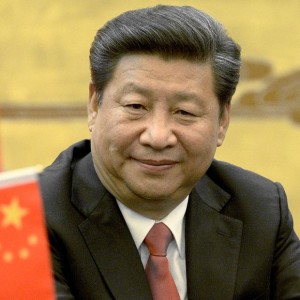
Enter the era of President Xi Jinping. He is a lawyer, chemical engineer, philosopher – and visionary. On 7 September 2013, President Xi Jinping gave a speech at Kazakhstan’s Nazarbayev University, in which he spoke about ‘People-to-People Friendship and Creating a better Future”. He referred to the Ancient Silk Road of more than 2,100 years ago, that flourished during China’s Western Han Dynasty (206 BC-AD 24).
Referring to this epoch of more than 2,000 years back, Xi Jinping pointed to the history of exchanges under the Ancient Silk Road, saying,
“they had proven that countries with differences in race, belief and cultural background can absolutely share peace and development as long as they persist in unity and mutual trust, equality and mutual benefit, mutual tolerance and learning from each other, as well as cooperation and win-win outcomes.”
Xi’s vision may be shaping the world of the 21st Century. He designed and engineered the Belt and Road Initiative, loosely modeled according to the Ancient Silk Road, soon after assuming the Presidency in 2013. He launched this ground-breaking “project”, a fabulous idea to connect the world with transport routes, infrastructure, industrial joint ventures, teaching and research institutions, cultural exchange and much more. Enshrined in China’s Constitution, BRI has become the flagship for China’s foreign policy.
BRI is literally building bridges and connecting people of different continents and nations. The purpose of the New Silk Road is “to construct a unified large market and make full use of both international and domestic markets, through cultural exchange and integration, to enhance mutual understanding and trust of member nations, ending up in an innovative pattern with capital inflows, talent pool, and technology database”.
During the 19th National Congress in 2017, BRI was included in the Chinese (CPC) Constitution as an amendment to promote the BRI’s objective of “shared interests” and “shared growth” which are major political objectives for China. This amendment to the Constitution for raising international cooperation through a multifaceted socioeconomic development endeavor is unique in China’s history. It fits precisely the theme of the present Forum, “The Construction of the Community with a shared Future for Mankind”.
The BRI is a global development strategy adopted by the Chinese Government, eventually with investments in more than 150 countries and international organizations – and growing – in Asia, Africa, Europe, the Middle East and the Americas. BRI is a multi-trillion investment scheme, for transport routes on land and sea, as well as construction of industrial and energy infrastructure, energy exploration, cultural exchange and integration facilities, education and research institutions – as well as trade among connected countries; and, unlike WTO (World Trade Organization), BRI is allowing nations to benefit from their comparative advantages, creating win-win situation. In essence, BRI is to develop mutual understanding and trust among member nations, allowing for free capital flows, a pool of experts and access to a BRI-based technology data base.
At present, BRI’s closing date is foreseen for 2049 which coincides with new China’s 100th Anniversary. The size and probable success of the program indicates, however, already today that it will most likely be extended way beyond that date. It is worth noting, though, that only in 2019, six years after its inception, BRI has become a news item in the West. Remarkably, for six years BRI was denied, or ignored by the western media, in the hope it may go away. But away it didn’t go. To the contrary, many European Union members have already subscribed to BRI, including Greece, Italy, France, Portugal – and more will follow, as the temptation to participate in this projected socioeconomic boom is overwhelming.
Germany is mulling over the benefits and contras of participating in BRI. The German business community, like business throughout Europe, is strongly in favor of lifting US-imposed sanctions and reconnecting with the East, in particular with China and Russia. But the official Berlin is still with one foot in the White House – and with the other trying to appease the German – and European – world of business. This balancing act is in the long run not sustainable and certainly not desirable. At present BRI is already actively involved in over 80 countries, of which at least half of the EU membership.
To counteract the pressure to join BRI, the European Union, basically run by NATO and intimately linked to Washington, has initiated their own ‘Silk Road’, to connect Asia with Europe through Japan. In that sense, the EU and Japan have signed a “free trade agreement” which includes a compact to build infrastructure, in sectors such as energy, transport and digital devices. The purpose is to strengthen economic and cultural ties between the two regions, boosting business relations between Asia and Europa. It is an obvious attempt to compete with or even sideline China’s BRI. But it is equally obvious that this response will fail. Usually initiatives taken in ill-fate are not successful. And China, non-belligerent China, is unlikely to challenge this EU-Japan competitive approach.
China’s New Silk Road is creating a multipolar world, where all participants will benefit. The idea is to encourage economic growth, distributed in a balanced way, so as to prioritize development opportunities for those most in need. That means the under-developed areas of western China, eastern Russia, Central Asia, Central Europe – reaching out to Africa and the Middle East, Latin America, as well as to South East Asia and the Pacific. BRI is already actively building and planning some six to ten land and maritime routes, connecting Africa, the Middle East, Europe and South America (see map, above).
The expected multi-trillion-dollar equivalent dynamic budget is expected to be funded by China, largely, but not exclusively, by the Asian Infrastructure and Investment Bank (AIIB), by Russia – and by all the countries that are part of BRI and involved in singular or multi-country projects.
Implementing BRI, or the New Silk Road, is itself the realization of a vision of nations: Peaceful interconnectivity, joint infrastructure and industrial development, as well as joint management of natural resources. For example, BRI may help with infrastructure and management advice resolving or preventing conflicts on transboundary water resources. There are some 263 transboundary lake and river basins, covering almost half the earth’s surface and involving some 150 countries. In addition, there are about 300 transboundary aquifers serving about 2 billion people who depend on groundwater.
Water resources, life depends on them. If these resources are not properly managed, by, say, one or several parties taking advantage of the other users, a conflict is born. Often such conflicts can become violent. BRI may turn this source of potential hostilities around into a source for peace. Water is among the most shared resources on earth, and as such it may serve as an instrument for peaceful connectivity.
The Chinese government calls the Silk Road Initiative “a bid to enhance regional connectivity and embrace a brighter future”. With freshwater resources rapidly diminishing for ready use in the public domain, because of industrial and human pollution and privatization, management of water resources and transboundary water in particular, may be constructed into a “Shared Future for Mankind.” The Belt and Road Initiative may provide the guiding principles for this shared future of life’s essential resource – water.
Today, “Give Peace a Chance” is more relevant than ever. And China is a vanguard in promoting peaceful development across the globe. During the Cuban Conference “For a World in Equilibrium” of January 2019, one of the Chinese representatives said very unequivocally in his presentation, “we are building bridges between people and nations to connect the world peacefully”. Undoubtedly, he is right and was referring to President Xi Jinping’s Belt and Road Initiative, or the New Silk Road.
The same can unfortunately not be said about the West which is, instead, building walls, predominantly the US, followed by her European vassals, either physical walls, or walls by conflicts, wars and – walls by “economic sanction”, by which they strangle and kill people en masse. Whenever a government does not share the US neoliberal doctrines, or refuses to bend to their dictate and efforts to plunder a country of natural resources, it is first subject to atrocious sanctions, then to military intervention with the goal of regime change. All that is possible, because the western world is run by the fiat dollar system, under which all international transactions have to transit through an American bank, foremost a Wall Street bank. That’s how they block transfers, confiscate and steal money in banks all over the world.
In Venezuela sanctions started soon after President Hugo Chavez was elected as President in 1998. They were severely enhanced under Obama in 2014, and President Trump squeezed the country even more in 2017. In August 2019 Trump tightened the noose of economic strangulation to the maximum, “the most that any country has been sanctioned”, he proudly proclaimed, blocking and confiscating government accounts, including national reserve accounts and gold all around the western world. They are seizing Venezuelan assets in the US and internationally, intercepting ships and otherwise interrupting trade, for example blocking crucial medication and food stock from entering the country, while also threatening sanctions on countries that are trading with Venezuela.
According to Venezuelan officials, the financial losses since 2017 amount to at least 130 billion dollars. These funds represent goods and services, the absence of which compromises not only wellbeing but real lives of Venezuelans. The 130 billion dollars could amply supply food and medication for Venezuelans to live well and for hospitals to function with the necessary medication and equipment. In addition, the US was directing mercenaries and members of the government opposition to sabotage the countries electric system, which caused days, in some regions weeks of black-outs, a disaster for hospitals depending on electricity for refrigeration and lighting of operating theaters. Indeed, a recent study by the Center for Economic Policy Research (CEPR), in Washington, concluded that sanctions of the US and their European allies may have cost the lives of up to 40,000 Venezuelans. But Venezuela will not cave in and will survive, largely thanks to the support from China and Russia.
At this time could also be mentioned the 60 years blockade of Cuba, the US instigated wars on Iraq, Syria, Afghanistan, Vietnam, the civil wars in Central America, Central Africa, the hostilities towards North Korea – and of course the constant aggressions vis-à-vis China and Russia – and much more. All for eradicating any “threat” of socialism that might spread as a positive alternative to boundless turbo-capitalism which is currently running the western world.
But enough about the west and its drive for world hegemony in flagrant disrespect of international law and Human Rights. It just goes to illustrate a few examples to juxtapose the west and the east, foremost China in alliance with Russia, whose approach is a multipolar socioeconomic development scheme, generous and peaceful, connecting people through trade and through BRI.
“The future is in the East” – so goes a progressive axiom. It is also my strong believe. By the East is meant China, Russia, most of Central Asia; now all represented by the Shanghai Cooperation Organization (SCO), or the Shanghai Pact. SCO is a Eurasian political, economic, and security alliance, the creation of which was announced on 15 June 2001 in Shanghai, China by the leaders of China, Kazakhstan, Kyrgyzstan, Russia, Tajikistan, and Uzbekistan. The Pact was signed in June 2002 and entered into force in September 2013. SCO’s headquarters are in Beijing
Today, the SCO counts 8 members, including the member India and Pakistan. Iran and Mongolia are on a “waiting list”, on the verge of becoming members. Turkey, already a dialogue partner, is increasingly vying gaining SCO access, either through association or full membership. And this, despite the conflict it may create with Turkey’s NATO partners, mainly the US. Clearly, were Turkey to join the SCO, exit from NATO would be imminent – and disastrous for NATO, perhaps he stumbling block that would bring NATO down. Especially, since popular anti-NATO pressure from Italy to Germany, Greece, Spain and Portugal is steadily growing. Turkey is also the most strategically located NATO partner between East and West; between Europe and Asia, controlling the Bosporus, access to the Black Sea.
The SCO has also several observer and dialogue partners which eventually, it is assumed, may become full-fledged SCO members. The SCO is also called the alliance of the east and is considered a security pillar in more ways than one: SCO members account for almost half of the world population and for about one third of the world’s economic output. In other words, this eastern alliance is politically and economically autonomous and to a large extent detached from the western dollar based “sanction-prone” economy.
The SCO, a visionary Chinese initiative of the early 2000s, was overlaid and expanded in 2013 by another brilliant Chinese Initiative, the BRI. May also be added to this powerhouse another association of countries, the Eurasian Economic Union (EAEU), primarily a trading partnership. The members are located in central and northern Asia, and include Armenia, Belarus, Kazakhstan, Kyrgyzstan and Russia. The treaty was formally established in January 2015.
This block of eastern countries and associations is seeking against all odds, a multi-polar world, a world of Peace and Prosperity for All – a big challenge given the current socioeconomic disequilibrium – but feasible with mutual respect and a will to cooperate, to apply the forces of synergy and solidarity, as is inherent in the Belt and Road approach. The stakes are high. As Russia’s Foreign Minister, Mr. Lavrov pointed out during the 74th UN General Assembly, in September 2019: “The West ignores reality by trying to prevent the formation of a multi-polar world by imposing its narrow “liberal” rules on others.” But, he added, “Western dominance is on the wane, ‘we’re liberals, so everything’s allowed’ just isn’t working anymore.” These words are the basis for a strong pillar and union of eastern associations.
Outlook and Vision
Economy
China has registered during the past decades a phenomenal economic growth rate, at times exceeding 12% per year. Today it has been on purpose reduced to about 6%, so as to allow a better distribution of the growth benefits, and also spread wealth more horizontally to create greater equality of wellbeing.
In figures and facts:
China’s GDP measured in US-dollars amounts to $14.2 trillion (nominal; 2019 est.), which corresponds to $27.3 trillion in Purchasing Power Parity (PPP; 2019 est.). This corresponds to US$ 10,153 / capita, in nominal term (2019 est.), to US$ 19,520 / capita measured by PPP.
Compare this with the US GDP of US$ 21.345 trillion in nominal terms (2019 est.) and $64,767 / per capita (2019 est.) This makes China the world’s second largest economy in nominal terms, expected to exceed the US by 2026. However, when comparing the two GDPs by their PPP values, China is number one; having surpassed the United States in 2016.
Measured by PPP, China is already today de facto the world’s largest economy, because the only figures that have any significance in economic production and consumption, are those that reflect the output’s purchasing power.
Examples of Economic Efficiency
New Airport in Beijing: In only 4 years China built by far the world’s largest airport in Beijing, Daxin International Airport. It was ready for China’s 70th Birthday on 1 October 2019, when it was inaugurated by President Xi Jinping. It has been operational the week after inauguration. This airport, an architectural wonder, covers some 700,000 m2 (almost 100 football fields) and carries passengers by fast train in 20 minutes to the center of Beijing. It is expected to accommodate in 2021 already 45 million passengers and can easily be expanded to receive and serve 100 million passengers as the need requires. This airport is a sign that China is capable of realizing extraordinary achievements – it signals a visionary future.
China’s Rapid Urbanization: When in 2017, Beijing was faced with a housing shortage for low-wage migrant workers, they built 100,000 low-rent apartments in twelve months. The speed of China’s infrastructure development, the rapid urbanization, providing millions of new subsidized housing for migrant workers, is a model that has worked and is being replicated throughout China. In fact, pays off socially and economically. People who do not have to worry about shelter, are healthier and live and work better. China has been building homes for a million people–the entire housing stock of San Francisco – every month since 1950. This policy aims at and creates wellbeing among the workers, among the people – and is at the same time a solid tool for China’s economic development – and people’s happiness. China’s successful and rapid housing development is being closely watched by Australia, as her major cities, Sydney and Melbourne face similar problems.
Trade
China has been the world’s largest exporter of goods since 2009. Official estimates suggest Chinese exports amounted to about $2.1 trillion in 2017. The total annual value of the country’s exports equates to approximately $1,500 for every Chinese resident. Since 2013, China has as well become the world’s largest trading nation.China is also a significant importer and accounts for about 10% of total global imports, i.e., about US$ 1.7 trillion, leaving China as a net exporter with a trade surplus of about US$ 400 billion. – Trade war with the US– see below.
Monetary Policy
China’s Yuan, is a solid currency, backed by China’s economy and by gold. In 2017 the Yuan was admitted into the International Monetary Fund’s (IMF) basket of reserve currencies, which constitute the SDR – or Special Drawing Rights. The SDR basket consists of five currencies and their respective weights are: US-Dollar $41.73%, Euro 30.93%, Renminbi (Chinese Yuan) 10.92%, Japanese Yen 8.33%, British Pound 8.09%. The Yuan is clearly undervalued in the SDR basket, as it is rapidly replacing the dollar as reserve currency. Treasurers around the globe realize that the US-dollar is fiat money, backed by nothing, whereas the Yuan is a solid currency, based on a solid economy, plus backed by gold.
The decline of the US dollar as a world reserve currency means that the US dollar hegemony is fading. This is inadmissible for the US. Therefore, Washington along with the major western allies are considering to abandon the key reserve role of the dollar and replacing it with some kind of an SDR, in which the dollar would maintain a prominent role, but its Ponzi-scheme characteristics would no longer be openly visible.
The current US debt to GDP ratio is about 105%. However, what the General Accounting Office calls “unmet obligations” amounts to about 700% of GDP (net present value – total outstanding obligations discounted to today’s value). According to former Federal Reserve Chairman, Alan Greenspan, responding to a journalist’s question, “we will never pay back our debt; we will just print new money”. This is a dangerous pyramid, or Ponzi-scheme, of which most governments are aware, and yet many of them hold on to the dollar as key reserve currency. With the yuan rising, this may change rapidly. In fact, the conversion from dollar to yuan as reserve currency has already started.
Regarding the western foreseen reserve basket to “save” the dollar, it is not clear yet what the other currencies and their respective weight in the new “Reserve SDR” would be, but let’s assume the same five currencies. The Yuan, if still in the reserve basket would probably still be under-valued. If so, this might be a good reason for China to exit the Reserve SDR and continue with the Yuan by its own economic and monetary value as a reserve currency. The Yuan has made its reputation of stability and does no longer need the backing of a (western coined) SDR to prove its strength as a reserve currency.
The War on Tariffs
In June 2018, US President Trump started an unprovoked Trade War with China, then expanded it to other countries, including his European allies. But it is most ferocious with China. As usual, China’s response was not hostile. Retaliation, yes; but still an approach of seeking negotiations and compromise. In reality, the US market for China may be important, but not that important to be humiliated as was the case with the American bulldozer approach to impose not just tariffs, but tariffs that were nothing but a new form of economic sanctions.
The real meaning and purpose behind these tariffs was not reducing China’s exports in the first place, but harming the Yuan, as it was gaining strength and, as mentioned before, gradually taking over the US-dollar’s role as world reserve currency. Some 20 years ago the US dollar accounted for more than 90% of all reserve assets in nations’ treasuries around the globe. Today, that percentage has shrunk to less than 60% and is fading rapidly. Much of the lost territories by the US dollar was made up by the Chinese Yuan. And as the importance of the Yuan rises, the US hegemony of the world’s economy, resources and people will fade. This does not go down in Washington without a fight.
Future Economic Growth
China, in the near future, will most likely keep to a “modest” growth rate, around 5% to 7%, concentrating on horizontal distributive growth, with a focus on improved public wellbeing for all, universal access to affordable housing, basic infrastructure, water supply, sanitation, public transportation, rural higher education, as well as internal cultural exchange and harmonization. Two areas of economic development, ”horizontal growth”, may be singled out; (i) Artificial Intelligence (AI), and (ii) Environmental Improvement.
Technological Innovation
China is a Power House of new technologies and no doubt the world’s number one in Technological Innovation. Just to mention a few, not in order of priority:
- Rapidly progressing robotization of construction and manufacturing, as well as of medical interventions, like surgeries and localized cancer treatment;
- 3-D construction of serving a myriad of sectors, including manufacturing in the medical sector, medical equipment, human body replacement parts, production of construction materials – and more. China predicts in 20 to 30 years everybody (in China) will have access to individualized 3D building capacity;
- Face recognition technology, making traditional ID and bank account access cards obsolete and identity protection more secure;
- High-speed train systems, a domain where China has bypassed Japan and is the world’s number one; i.e. the high-speed railways Shanghai Maglev and Fuxing Hao CR400AF/BF;
- A new generation of garbage recycling – into building material, fertilizers, fuel as a source of energy – and more;
- Architecture and building efficiency, only two examples, (i) the new Beijing Daxin International Airport, the world’s largest, built in just 4 years, with a capacity of more than 100 million passengers per year – and a superb architecture; (ii) the “Birds Nest” – the stadium for the 2008 Summer Olympics which will also be used for the 2022 Winter Olympics; it was built in less than 5 years and is an architectural masterpiece, and
- Artificial Intelligence (AI) – see below.
China’s ambition: Everything is possible – and China has already proven that it can be done.
Artificial Intelligence (AI).China is also moving rapidly towards leadership in Technical Innovation for Artificial Intelligence, with plans to invest considerable resources into research. In 2017, the State Council (CCP) issued a “Next Generation Intelligence Development Plan”, including a US$ (equivalent) 2.1 billion AI industrial park. By 2025 the State Council predicts China to be a leader in AI research and predicts that China’s AI core industry will be worth some US$ 60 billion, amounting to about US$ 700 billion equivalent, when accounting for related industries. By 2030, the State Council expects China to be the global leader in development of AI.
Environmental Improvement. China has made leaps in improving her environment, by far exceeding efforts of western countries. China’s environmental policies are developing BRI at home and abroad in shades of green. New parks with trees and areas for recreation are emerging in every major city in China. According to an expert at the School of Regulation and Global Governance of the Australian National University, Beijing has improved its air quality by 30% in the last five years.
A study of the University of Chicago demonstrates that Chinese cities have reduced the concentrations of fine particulates in the air on average by 32 % between 2014 and 2018.
The Chinese people and government are putting utmost importance to protecting the environment and ecosystems. Green development makes for improved public health, but is also attractive for investments.
China has a three-year “green” plan to improve air quality and tighten regulations. Air quality is one of the key environmental issue besetting China. In that sense, the government is accelerating the electrification of vehicles and has pledged that by 2030 all new cars will be powered by electricity.The government is also tackling drinking water quality and shortages, as well as improving urban and rural sanitation. These are longer-term propositions. Cost estimates for China’s overall environmental programs are not readily available but may easily reach into hundreds of billions of US-dollar equivalents over a ten-year period.
Conclusion
A few years ago, China, Russia and other SCO countries have started trading among themselves in their local currencies with a non-western monetary transfer system, using mostly the Chinese Cross-Border Interbank Payment System (CIPS). It is out of control of the western SWIFT transfer system, thereby escapes the sanctions regime of the US. Gradually, the SCO and associated countries are detaching themselves from the western dollar-based fiat system.
In terms of trading, the SCO countries, mainly China, control most of the Asian markets, even making rapid inroads into Japan and Australia, and are evermore present in Latin America and Africa. Before long Europe will see the light and turn eastwards. It would be a wise decision. Dealing first within the confines of the huge Eurasian landmass, including the Middle East and parts of Africa – has been the logical way of trading since the Ancient Silk Road, more than 2,000 years ago.
China has a great visionary future that had already begun 70 years ago, and was enhanced six years ago with President Xi Jinping’s launching of the Belt and Road Initiative. BRI will continue spanning the globe for the next at least 50 to 100 years, spreading development in a multi-polar world, stressing equality and wellbeing for all. BRI investments may be counted in the multi-multi trillions and will be funded by China and the participating countries, with a socio-economic return that cannot be expressed in sheer monetary terms, as investments will also bring unfathomable social benefits, poverty reduction, improved health, higher and better education and, generally improving people’s wellbeing.
The bright side of this initiative, is the Chinese philosophy of non-aggression, of diplomacy to resolve conflicts and of promoting peaceful economic coexistence and development around the globe.
China’s determination to develop with a “green” economy, a “green” BRI and a horizontal distributive growth that emphasizes equality and inclusion is a landmark model for the world to embrace. It is a model to construct a Community with a Shared Future for Mankind.
*
Note to readers: please click the share buttons above or below. Forward this article to your email lists. Crosspost on your blog site, internet forums. etc.
Peter Koenig is an economist and geopolitical analyst. He is also a water resources and environmental specialist. He worked for over 30 years with the World Bank and the World Health Organization around the world in the fields of environment and water. He lectures at universities in the US, Europe and South America. He writes regularly for Global Research; ICH; RT; Sputnik; PressTV; The 21st century; Greanville Post; Defend Democracy Press, TeleSUR; The Saker Blog, the New Eastern Outlook (NEO); and other internet sites. He is the author of Implosion – An Economic Thriller about War, Environmental Destruction and Corporate Greed – fiction based on facts and on 30 years of World Bank experience around the globe. He is also a co-author of The World Order and Revolution! – Essays from the Resistance.
He is a Research Associate of the Centre for Research on Globalization.

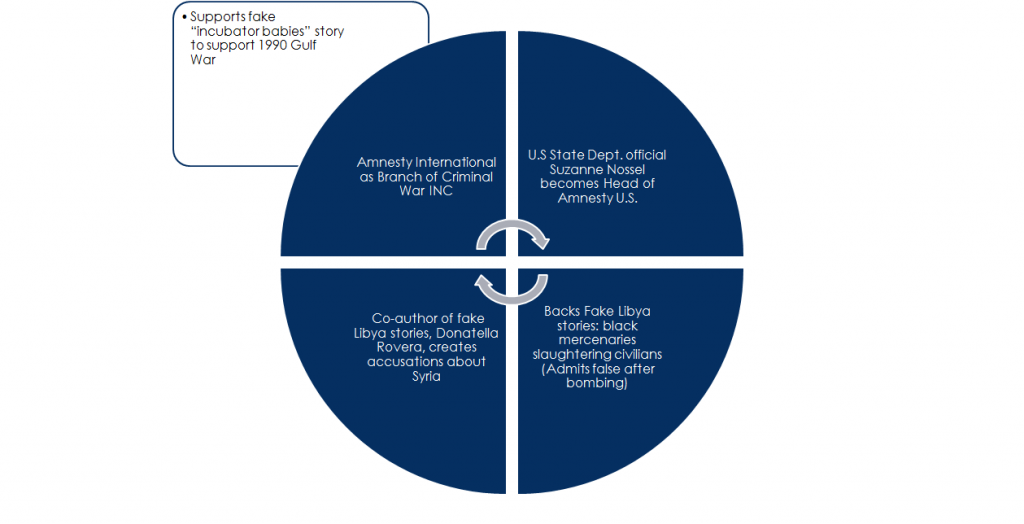


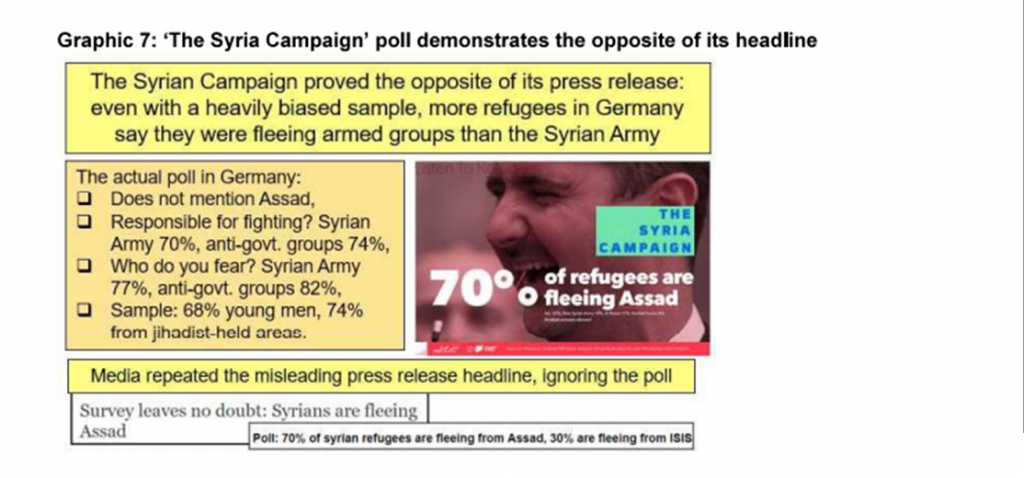
 Voices from Syria
Voices from Syria 



